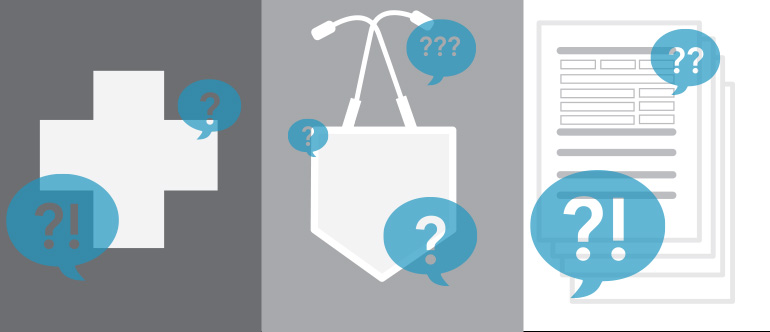Consumer Education Must be Part of ACA Outreach by Hospitals and Insurers

You’ve heard it, and we’ve heard it: “Thanks to healthcare reform, healthcare consumers are empowered!” Of course, we’ve been saying, “Not so fast!” In our view, most consumers aren’t prepared at all for the task of shopping for and selecting coverage for themselves and their families.
In fact, a recent post from the Association of Health Care Journalists indicates that a lack of health literacy may keep people from benefiting from the Affordable Care Act (ACA) altogether. Joanne Kenen, author of the piece, writes, “We all know that the Affordable Care Act is complicated, and the intense political fighting about it has added to the confusion and the challenges of getting simple apolitical messages across. But is it all about politics and messaging? How much of a role does ‘health literacy’ – or more specifically ‘health insurance literacy’ play?”
Health care literacy, of course, goes well beyond the ACA: if you use healthcare at all, you need to understand it. U.S. News & World Report has attributed billions in cost to health illiteracy, as well as “a worsening cycle of health problems” for consumers. Health illiteracy consequences include everything from inability to “interpret medication labels and health messages” to “more hospitalizations and re-admissions.”
And yes, health illiteracy can also mean “health insurance illiteracy,” which impacts consumers’ ability to select insurance plans (are consumers able to pick the best plans for them? do they understand the roles of deductibles? premiums? co-pays?). In addition, health insurance illiteracy may determine if consumers can properly utilize plan benefits.
These are important issues for payers and providers: consumer education is going to be a large part of what they do from the standpoints of both marketing and human resources. For example, through a good marketing strategy, they need to develop the right digital assets – including tools and content like videos, webinars and blog posts – to help consumers who are online and on mobile devices. In addition to offering in-depth exploration of products and services, the content must first do a good job of communicating the basics for those who need it.
Payers and providers also need to invest in human resources. This includes extensive training of customer service representatives on the payer side and greater hands-on patient advocacy on the provider side through experimental models, such as the IMPaCT program (Individualized Management for Patient-Centered Targets) devised by UPenn. IMPaCT is a replicable, peer support program in which hired community health workers help to improve access to care, facilitate communication and reduce repeat hospitalizations. Since outcomes-based compensation isn’t too far off, services like these – which can make all the difference for patients – will be important to hospitals financially, as well.
In combination, these efforts improve patients’ health while also improving their immediate experience with payers and providers. And in the long term, those who spend time to educate consumers may endear themselves as trusted resources.
Given the large volume of people entering the healthcare marketplace, there is no work-around, and the time is now. Hospitals and insurers must evaluate both their marketing strategies and their human resources capabilities to ensure that they are educating consumers, providing them with enough health – and health insurance/ACA – literacy that they can be smart consumers and keep their families healthy.
Other Media Logic posts related to public education and the healthcare consumer:







